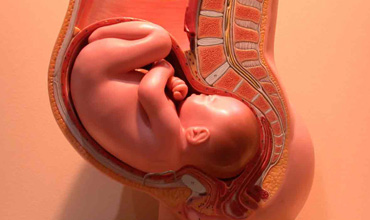Anomalous “Mutilated Common Trunk” Aortic Arch Embryological Basis and its Clinical Significance

Abstract:
Normally, the human
Aortic arch branching into three vessels, the adult archetype of the Aortic
arch and its branches are formed, due to the different growth pattern of the
branchial arch arteries and their associated “migration” and “merging” of their
branches. The anomalous branching patterns in the aortic arch are due to the
deviations or disturbances the normal growth pattern of the aortic or branchial
arch arteries during the embryonic period. The
brachiocephalic trunk (BCT), the left common carotid artery (LCCA), the left
vertebral artery (LVA), and the left subclavian artery (LSA) pattern was
the most common four vessels arch branching pattern accounting up to 84.8%. The
common trunk formation by these vessels is prevalence up to 16.1%, out of which
11% of the cases were the left vertebral artery originated with the left
subclavian artery and form the “common vertebro-subclavian trunk - CVST”. The
ontogenesis for these anomalous anatomical configurations and its clinical
significance are still remaining unclarified. The
implication of these common trunk arteries has not been properly signified in
the literature till now. Till today the common vertebro-subclavian trunk
Aortic arches are commonly regarded as a normal variant so, very little direct
data are available. Generally, the patients with common vertebro-subclavian
trunk Aortic arches are clinically normal and asymptomatic. Currently, the
clinicians claimed the common vertebro-subclavian trunk Aortic arches are
common in patients with atheromatic hypoperfusion and aneurysms. The present
study aimed to through insight knowledge about this common trunk variant of the
aortic arch. Recently, it is well identified that the suspicion exists with
silent common vertebro-subclavian trunk Aortic arches, leads to sudden severe
neurological complications due to the wide range of atheromatous plaques and
congenital aneurysms, may cause fatal. Since the common vertebro-subclavian
trunk Aortic arches are treated as “Mutilated Common Trunk –MCT” of the aortic
arches.
Keywords:
Mutilated Common Trunk, Common vertebro-subclavian
trunk, Bovine trunk, Truncus bicaroticus.
References:
[1]. Boyaci
N, Dokumaci DS, Karakas E, et al. Multidetecor computed tomography evaluation
of aortic arch and branching variants. Turk Gogus Kalp Dama. 2015;23(1):51-57.
[2]. Budhiraja
V, Rastogi R, Jain V, et al. Anatomical variations in the branching pattern of
human aortic arch: A cadaveric study from central India. ISRN Anatomy.
2013;2013:828969.
[3]. Befeler
B, Aranda MJ, Embi A, Mullin FL, El-Sherif N, Lazzara R. Coronary artery
aneurysms: study of the etiology, clinical course and effect on left
ventricular function and prognosis. Am J Med 1977;62:597–607.
[4]. Bogousslavsky
J; Van Melle G, Regli F. The Lausanne Stroke Registry: analysis of 1,000
consecutive patients with first stroke. Stroke 1998;19:1083–92
[5]. Cloud
GC, Markus HS. Diagnosis and management of vertebral artery stenosis. QJM 2003;
96:27–54.
[6]. Caplan
LR. Arterial occlusions: Does size matter? J Neurol Neurosurg Psychiatry
2007;78:916.
[7]. Chuang
YM, Huang YC, Hu HH, et al. Toward a further elucidation: Role of vertebral
artery hypoplasia in acute ischemic stroke. Eur Neurol 2006;55:193–7.
[8]. Daoud
AS, Pankin D, Tulgan H, Florentin RA. Aneurysms of the coronary artery. Report
of ten cases and review of literature. Am J Cardiol 1963;11:228–37.
[9]. Jakanani
GC, Adair W. Frequency of variations in aortic arch anatomy depicted on
multidetector CT. Clin Radiol. 2010;65:481-87.
[10]. Jeng
JS, Yip PK. Evaluation of vertebral artery hypoplasia and asymmetry by color
coded duplex ultrasonography. Ultrasound Med Biol 2004;30:605–9.
[11]. Jeng
JS, Yip PK. Evaluation of vertebral artery hypoplasia and asymmetry by color
coded duplex ultrasonography. Ultrasound Med Biol 2004;30:605–9.
[12]. Min
JH, Lee YS. Transcranial doppler ultrasonographic evaluation of vertebral
artery hypoplasia and aplasia. J Neurol Sci 2007;260:183–7.
[13]. Natsis
KI, Tsitouridis IA, Didagelos MV, et al. Anatomical variations in the branches
of the human aortic arch in 633 angiographies: clinical significance and
literature review. Surg Radiol Anat. 2009;31:319-23.
[14]. Ogeng’o
JA, Olabu BO, Gatonga PM, Munguti JK. Branching pattern of aortic arch in a
Kenyan population. J Morphol Sci. 2010;27(2):51-55.
[15]. Osborn
AG. The Aortic arch and great vessels. In: Diagnostic Cerebral Angiography. 2nd
ed. Philadelphia, Pa: Lippincott Williams & Wilkins; 1999:3–29.
[16]. Patil
ST, Meshram MM, Kamdi NY, et al. Study on branching pattern of aortic arch in
Indian. Anat Cell Biol. 2012;45:203-06.
[17]. Peker
O, Ozisik K, Islamoglu F, Posacioglu H, Demircan M. Multiple coronary artery
aneurysms combined with abdominal aortic aneurysm. Jpn Heart J 2001;42:135–41.
[18]. Phan
T, Huston J 3rd, Bernstein MA, Riederer SJ, Brown RD Jr. Contrast enhanced
magnetic resonance angiography of the cervical vessels: experience with 422
patients. Stroke. 2001;32(10):2282-6.
[19]. Perren
F, Poglia D, Landis T, et al. Vertebral artery hypoplasia: A predisposing
factor for posterior circulation stroke? Neurology 2007;68:65–7.
[20]. Perren
F, Poglia D, Landis T, et al. Vertebral artery hypoplasia: A predisposing
factor for posterior circulation stroke? Neurology 2007;68:65–7.
[21]. Park
JH, Kim JM, Roh JK. Hypoplastic vertebral artery: Frequency and associations
with ischaemic stroke territory. J Neurol Neurosurg Psychiatry 2007;78:954–8.
[22]. Shi-Min
Yuan. Aberrant Origin of Vertebral Artery and its Clinical Implications. Braz J
Cardiovasc Surg 2016; 31(1):52-9.
[23]. Stajduhar
KC, Laird JR, Rogan KM, Wortham DC. Coronary arterial ectasia: increased
prevalence in patients with abdominal aortic aneurysm as compared to occlusive
atherosclerotic peripheral vascular disease. Am Heart J 1993;125: 86–92.
[24]. Trattnig
S, Hubsch P, Schuster H, et al. Color-coded doppler imaging of normal vertebral
arteries. Stroke 1990; 21:1222–5.
[25]. Williams
PL. Gray’s Anatomy. New York: Churchill Livingstone; 1995:312–15

